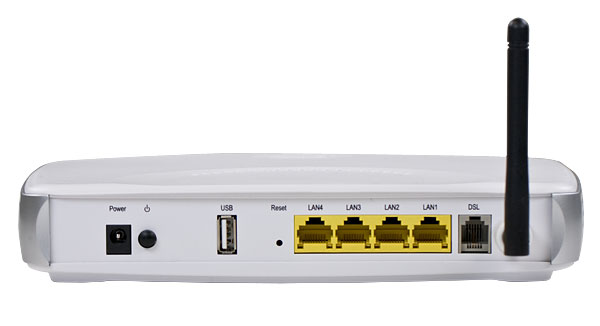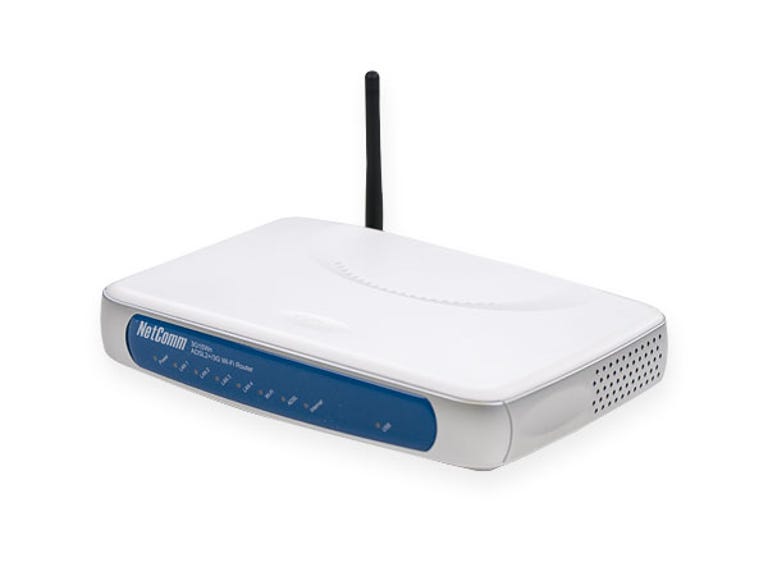 Why You Can Trust CNET
Why You Can Trust CNET NetComm 3G15Wn review: NetComm 3G15Wn
We just wouldn't feel comfortable recommending the NetComm. It's a victim to stability issues, and was our most frustrating router to deal with in terms of simply trying to connect to the wireless. Perhaps a firmware update will eventually solve our issues, but at this point we'd look elsewhere for your modem/router needs.
NetComm's 3G15Wn, as the product name not so discretely gives away, can handle 3G connections. That doesn't mean it comes with a 3G modem built-in — rather that the USB port on the rear can have one plugged into it, and that it will switch to 3G as failover if your ADSL connection fails. Just make sure it's on the compatibility list (PDF) before buying.
The Good
The Bad
The Bottom Line
Specs at a glance
| Firmware tested | L411-402NCM-C01_R10 |
|---|---|
| ADSL2+ modem | Yes |
| Annex M | Yes |
| 3G modem | Yes, through USB |
| Wireless protocols | 802.11b/g/n |
| Highest wireless security | WPA2 |
| WDS | Yes |
| Ethernet ports | 4x 100Mbit |
| USB print sharing/storage | Yes |
| Accessories | Ethernet cable, phone cable, CD containing quick-start guide and manual |
Connections

Power jack, power button, USB port, reset button, four 100Mb Ethernet ports, ADSL line. (Credit: Alexandra Savvides/CBS Interactive)
UI and features
NetComm's web user interface (UI) was easy to navigate, although for no reason we could determine loading any of the wireless configuration pages took an exceedingly long time, leading to frustration.
Almost every menu option also creates a drop down when you mouse over, which is fine enough, but some of those drop-down menus then expand sideways when you mouse over them, with no indication that there's further options hidden there in the first place. With 16 menu items under the "Advanced" menu, many of which have daughter menus, it's really quite easy to get lost, or have an idea of just how many features there are.
As seems to be sadly the norm with most routers, no effort is expended on explaining what any of the features do — it is up to the user to self educate, sometimes a daunting prospect given manufacturers often use different terminology for the same function.
NetComm's interface is quite simple, although it hides so many sections under the drop downs it can get a bit hard to keep track of where you are. (Screenshot by CBS Interactive)
Features that stand out from the norm include TR-069 support, time of day restrictions, a URL filter, guest Wi-Fi access (giving users access to the internet, but not your local network) and grouped interfaces — although the latter was buggy and didn't allow us to remove grouped interfaces we'd created.
During configuration we also managed to crash the router twice — this in combination with the weird long pauses on the wireless configuration page makes us think a lot of firmware work has yet to be done.
Performance
After analysing the spectrum with InSSIDer, an empty channel of either 1, 6 or 11 is chosen for 2.4GHz wireless testing. The router is restricted to the 20MHz band and is set to only allow 802.11n clients. If possible, the MCS is set to 15.
We use iperf to determine throughput, running eight streams, with a TCP window size of 1MB, and an interval of one second. The test is run for five minutes in three different locations, on two separate occasions. The locations are in the same room as the router, one floor down around spiral stairs and with concrete walls and floors, and two floors down under the same conditions.
The wireless throughput is tested using three chipsets, the Atheros AR5008X, Ralink RT2870 and Intel 5100AGN, then all results are averaged.
(Longer bars indicate better performance)
Here's where a graph doesn't tell the full story — while the averages look good, the performance was wildly variable during the tests, often troughing to zeroes then charging back up again, particularly with our Ralink connection. We had a hard time even connecting our wireless clients to the 3G15Wn to begin with, to the point where we gave up and simply left it for another day. The next day, the wireless client connected fine — we hadn't changed a thing, and the surrounding Wi-Fi networks hadn't changed either.
ADSL performance is simply measured by the sync speed on an Internode ADSL2+ connection to the St Leonards exchange, on the company's high speed profile. If the connection remains stable over a period of time, the sync speed is recorded.
(Longer bars indicate better performance)
Power consumption
We measured power consumption using a Jaycar mains digital power meter. It's important to note here that due to limitations of the meter, measurements are limited to values 1W and greater, and are reported in 1W increments.
The wireless radio was turned on, and an iperf test begun for measurement, using one wireless client and one wired.
| Juice Box |  |
|---|---|
| Transmitting | 9W |
| Idle | 9W |
The NetComm isn't a particularly thirsty or frugal router — it pulls 9W, an average result.
Warranty
NetComm offers a three-year warranty, but only if you register online.
Conclusion
We just wouldn't feel comfortable recommending the NetComm. It's a victim to stability issues, and was our most frustrating router to deal with in terms of simply trying to connect to the wireless. Perhaps a firmware update will eventually solve our issues, but at this point we'd look elsewhere for your modem/router needs.



